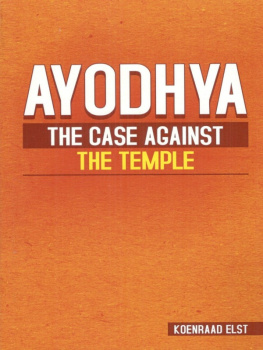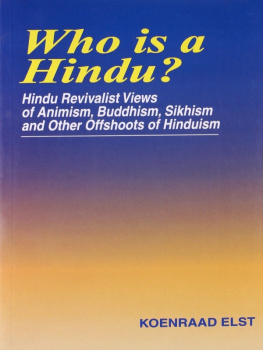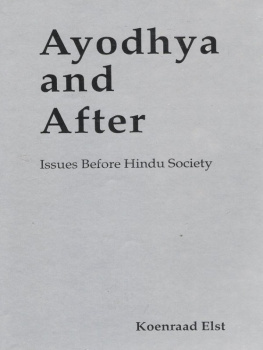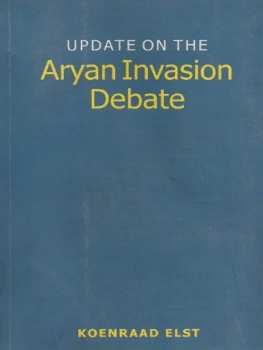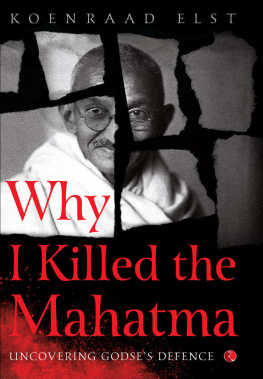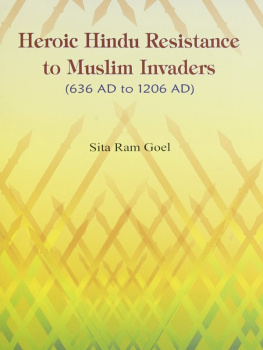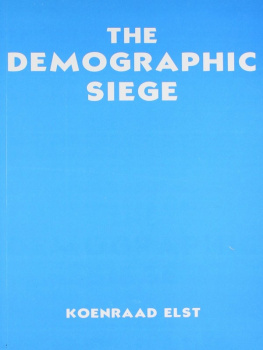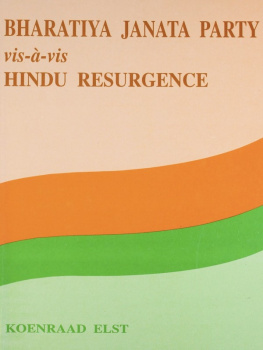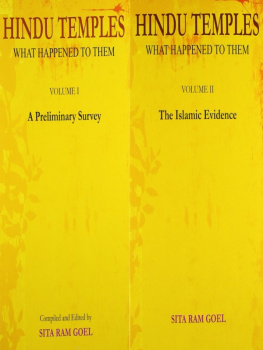Foreword
Foreword
The present book is my last contribution to the literature on what is known in India as "communalism", meaning the conflict between the different religions, principally Hinduism and Islam. Some of the authors whose works were published by Voice of India, notably Prof. Harsh Narain and Sri Suhas Majumdar, had only started speaking out on the communal question in the very last years of their lives. We must be grateful to them that they were willing to sacrifice their years of well-earned rest to a diagnosis of this unpleasant problem. I am very fortunate in having discovered the problem at an earlier stage of life and being offered a forum where I could contribute to the research into and reflection on its causes. In terms of my own potential, I feel I have exhausted the topic and I now intend to move on (or return) to more fundamental subjects of philosophy and religion.
My first book in this sphere of interest was Ram Janmabhoomi vs. Babri Masjid: A Case Study in HinduMuslim Conflict (1990). I now find it a somewhat clumsy attempt to understand the Ayodhya controversy, but at the time it served a good purpose, viz. to break the false impression that the world of scholarship including Western Indologists was united in certifying that the Hindu claim to the disputed site in Ayodhya was historically unfounded. in the subsequent years, evidence has been piling up in favour of the Hindu claim. Coming full circle, I have included in this book a compilation of papers on various aspects of the Ayodhya debate written by me between 1995 and 2002. Its main focus is the argumentation and view of Hindu-Muslim history offered by the anti-temple party.
My thanks are due to Yamini Liu, Gopi Maliwal, Krishan Bhatnagar and friends, Satinder Trehan, Tushar Ravuri and Vishal Agarwal, and to the Voice of India publishers.
Antwerp, 25 January 2002 KE
1. The Ayodhya Debate: Focus on the "No Temple" Evidence
In May 1998, the World Archaeological Congress held a conference on the island of Brac, Croatia, where a session was devoted to the Ayodhya dispute. I had registered to read a paper, and though I couldnt make it to the conference due to unforeseen family matters, I had prepared the following text.
1.1.Two sides to the story
In references to the question whether there really was a Hindu temple at the Ayodhya site later covered by the Babri Masjid, the focus is invariably on the case made by the Hindu side, viz. that there was a temple, and that different types of evidence confirm this. The standard question is: is this evidence for the temple demolition scenario valid? Have they succeeded in proving the existence of the temple? By contrast, the opponents of the temple hypothesis are but very rarely asked to put their evidence on the table.
But this argument is not valid: if there was no temple and no temple destruction, then there must have been something else at the site, some other history preceding the building of the mosque, which is exactly as capable of leaving some written or archaeological testimony as a demolished temple would. There is no need to prove the temples non-existence; it will do to prove the existence of something else at the site.
The disputed site is an elevated site near the centre of a city, quite well-known to a whole city population, so it is perfectly reasonable to expect the existence of testimonies of any alternative history of the site. Thus, the site may have been covered with a forest and the city records mention its felling to make way for a mosque; or the owner of some secular building standing at the site sold his real estate to the builder of the projected mosque at a fair price, vide the written sales contract. As much as the temple party is expected to provide evidence for the temple, the non-temple party must provide evidence for the alternative to the temple.
shows that none of them even formulates an alternative hypothesis. Not one of the numerous scholars who took up arms against the temple party has thought it necessary to explicitate even in the vaguest terms what exactly happened before a mosque was built at the site. Much less does any of them provide any kind of evidence for such an alternative scenario, even though positive proof for a non-temple scenario would be the best possible refutation of the temple scenario.
1.2. Vanquishing a straw man
The non-temple argumentation is confined to two types of evidence: arguments from silence, and attempts to find fault with pieces of evidence offered by the temple party.
Criticism of the pro-temple argument is usually directed against a straw man, not against the actual argumentation as presented by pro-temple scholars. A number of much acclaimed anti-temple publications bravely announce in the introduction or on the cover that they will demolish every argument given (or concocted and maliciously propagated) by the temple party, but then fail to address or even mention the main statements of the pro-temple party.
The same ignoring of the very argumentation which is purportedly refuted is found in the successive editions of S. Gopals Anatomy of a Confrontation, for most foreign scholars the only accessible source on the Ayodhya conflict. Even the fact that a Govemment-sponsored debate between historians mandated by both sides took place is obscured in most publications, and when it is at all mentioned, it is mostly to denounce the fact that the Government had collaborated with the communal forces by giving them a hearing at all.
1.3. Case study of a straw man
The single, most important book in the whole Ayodhya controversy is Sita Ram Goels two-volume book Hindu Temples, What Happened to Them.
Even more important is the second volume, The Islamic Evidence. It is the key to the whole Ayodhya controversy, no less. Its main parts are a 174-page compilation (emphatically not claiming completeness, merely the discovery of a tip of the iceberg) of Muslim literary and epigraphic evidence for the demolition of Hindu temples, and a 138-page presentation of the Islamic theology of iconoclasm. Goels comment on the compilation opens thus: Starting with Al-Biladhuri who wrote in Arabic in the second half of the ninth century, and coming down to Bashiruddin Ahmad who wrote in Urdu in the second decade of the twentieth, we have cited from seventy histories spanning a period of more than a thousand years.
The importance of the book is that it provides the historical and ideological context of the temple demolitions: it demonstrates that the Ayodhya dispute is not a freak case but on the contrary an entirely representative case of a widespread and centuries-long phenomenon, viz. Islamic iconoclasm. It shows that the iconoclastic demolition of Hindu temples was practised in practically all Indian regions which were under Muslim rule at one time. Historians, particularly modern historians with their emphasis on context, ought to welcome it and study it closely. Instead, it has been completely obscured and kept out of the picture in the whole controversy.
It may have achieved mention in a footnote here or there. The longest discussion of it which I am aware of, is by political scientist Chetan Bhatt (who does not try to hide his ignorance about medieval history), who devotes fifteen lines to it: two separate lines in his text, and a 13-line footnote.
It is of course very convenient to allege that embarrassing quotations are selective and pulled out of context, especially when you dont say what that context is, nor how it changes the meaning of the quotation. But here we are dealing with hundreds of quotations, requiring no less than an equal number of contexts to redeem them, to turn a testimony of fanatical vandalism into a testimony of tolerance. Moreover, it is normal for quotations to be selective (those in Bhatts own book, culled from writings by Hindu nationalist ideologues to put them in a bad light, certainly are); at any rate, quoting from primary sources is a decent form of scholarship. Incidentally, that the Mughals (meaning the Islamic invaders in general) were only interested in religious domination is a caricature misrepresenting Mr. Goels stated views; his point merely is that the religious motive provides an exhaustive and well-attested explanation for the observed fact of Islamic temple-demolishing campaigns.

